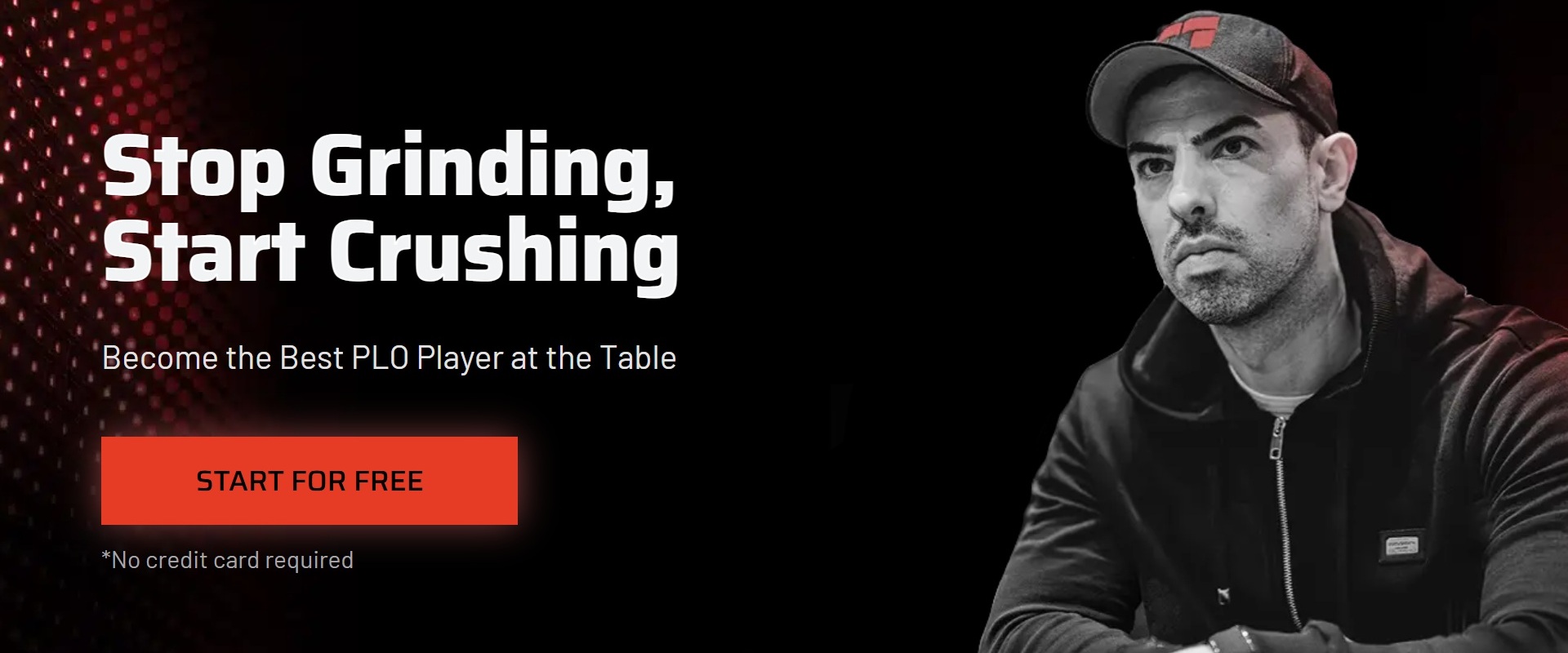How to Play Omaha Hi Lo: Rules, Strategy, and Tips for Success

Introduction: Why Omaha Hi Lo Is Actually Fun
If you’re tired of running into coolers in No-Limit Hold’em or you’re bored by four-card PLO, let me introduce you to Omaha Hi Lo (Omaha 8 or Better). This is the split-pot version of Omaha that brings in more action, more decisions, and—yes—more ways to win if you actually play smart. It’s a favorite for grinders at micro and low stakes. It’s also the game where NLHE converts either get crushed or find their new home.
If you want to stop getting quartered and start scooping, keep reading. This guide covers everything: Omaha Hi Lo rules, how to play, what hands to chase, and how to avoid looking like you just wandered in from a Hold’em table.
What is Omaha Hi Lo? (And How Is It Different from Omaha High?)
Omaha Hi-Lo—also called Omaha 8 or Better, or just “O8”—is played like regular Omaha, but there’s a twist: the pot can be split between the best “high” hand and the best “low” hand. If there’s no qualifying low, the high hand takes it all.
Key features:
- Four hole cards per player
- Five community cards, dealt flop/turn/river style
- Use exactly two hole cards and three board cards for your best hand
- The low hand must be five unpaired cards, all eight or lower
So, what does that mean for you? Well, it means you can win half the pot with a low, half with a high—or scoop it all with the right combo.
Omaha Hi Lo Rules: The Basics
You’ll need to know these before you even sit down:
- Players: 2-6 per table
- Deck: Standard 52-card
- Blinds: Small and big blind pre-flop, just like in Hold’em or PLO
- Hole cards: Four for each player
- Community cards: Five, dealt as flop (3), turn (1), river (1)
- Hand building: Two from your hand, three from the board—every time, for both high and low
- Low hand qualifier: Five different cards, all 8 or lower, no pairs. If there’s no low, high hand wins it all
- Pot Limit and Fixed Limit are most common; No Limit O8 is rare and usually not worth your time
Want a visual? You’d be surprised how many people mess up the “use two from your hand” part. If you need a quick Omaha basics refresher, check out the Omaha Poker Rules.
How to Play Omaha Hi Lo: A Complete Hand Breakdown
Let’s walk through a hand so you see how everything fits together:
- Blinds posted
- Four hole cards dealt to each player
- First betting round (pre-flop)
- Three flop cards dealt face up
- Second betting round
- Fourth card (turn) dealt face up
- Third betting round
- Fifth card (river) dealt face up
- Final betting round
- Showdown: Reveal hands. Best high and best low split the pot (if there’s a qualifying low)
Pro tip: You must use two hole cards and three board cards—no exceptions, no shortcuts.

Hand Rankings in Omaha Hi Lo
High Hand
The high hand in Omaha Hi-Lo is ranked just like Hold’em:
- Royal Flush
- Straight Flush
- Four of a Kind
- Full House
- Flush
- Straight
- Three of a Kind
- Two Pair
- One Pair
- High Card
Low Hand
The low hand is different. You need five different cards, all 8 or below. Aces are low for this purpose. Straights and flushes don’t matter for the low hand.
Best possible low: A-2-3-4-5 (“the wheel”).
Second best: A-2-3-4-6
Pairs kill your low. If the board is, say, A-2-7-9-K, and you have 6-8 in your hand, you still qualify for low (A-2-6-7-8).
The Split Pot: Why Your Bankroll Will Thank You (or Destroy You)
Omaha Hi Lo is all about the split. Half the pot for the high, half for the low. But if nobody makes a qualifying low, the high hand scoops everything.
Here’s where it gets wild:
- Scoop: Win both high and low with the same or different hands—take the whole pot.
- Quartered: You share the low with another player, so you only get a quarter of the pot, not half.
- No low: Sometimes, there’s no low hand possible—so the best high wins it all.
Always chase the scoop. Getting quartered stings way more than you think, especially when you’re new.
Betting Rounds and Pot Limit Structure
Most Omaha Hi-Lo games run as either Pot Limit or Fixed Limit.
- Pot Limit (PLO8): Max bet is the current pot size. Swings can be brutal, but you can build a stack quick.
- Fixed Limit (LO8): Betting is capped at fixed amounts. It’s more about grinding, less about huge bluffs.
- No Limit: Very rare for O8. If you see it, expect chaos and lots of mistakes.
Pot Limit games are usually more popular online. If you’re just learning, Fixed Limit is a softer landing.
Check out the best Omaha Hi Lo sites:
WPT Global
Free Tournament tickets up to $480
Free Casino Coin up to $100
30% Rakeback
Network: Independent
Phenom Poker
up to 35% Rakeback
Soft Action
Network: Independent
Juicy Stakes Poker
36% Rakeback
Spin & Gos with up to 12,000x your Buy-in
Network: Horizon Poker
Champion Poker
Network: iPoker
Omaha Hi Lo Strategy: Core Concepts
Starting Hand Selection
Listen, not all four-card hands are created equal. Chasing both high and low? That’s the sweet spot.
- A-2 suited is the best starting point—add a 3 or a wheel card, and you’re golden
- A-2-3-x, A-2-4-5: Hands with straight AND low potential are print money spots
- Double-suited hands: More ways to scoop
- Pairs without low potential? Meh. You’re just hoping the board bricks for everyone
Don’t waste chips calling with garbage like Q-J-9-6. You want hands that can scoop, not just “maybe win half.”
“The Nuts” Are Everything
Don’t fall in love with second-best hands. If you’re drawing to a non-nut low, or a non-nut flush, expect pain. Multiway pots are the norm, and someone else usually has the same low draw.
Position Is Your Best Friend
Action last = more info = fewer mistakes. Wait to see who’s betting and what the board looks like on the turn and river before you go nuts with one-way hands.
Advanced Omaha Hi Lo Tips
- Counterfeiting: If the board pairs your low cards, you might lose your low to someone with a better backup. Always have a backup low if you can.
- Scoop Mentality: The best hands win both high and low. If you’re always just trying to win half, your winrate will suffer.
- Bluffing: It’s rare at micro stakes. Everyone wants to see a showdown, so don’t torch money trying to bluff the field.
- Table Selection: Some tables are full of people who have no idea what’s going on—this is where your edge is biggest.
Do you want to learn more about advanced Omaha Hi-Lo tips? Check out Run It Once, the best Omaha Hi Lo Training site on the market:

Common Mistakes in Omaha Hi-Lo (And How to Avoid Them)
Chasing weak lows: Stop calling with hands that only make non-nut lows.
- Overplaying high-only hands: If your big pair can’t make a low, you’re often just hoping everyone else misses.
- Ignoring the board: Always check if a low is possible before betting big on the river.
- Misreading the scoop: Don’t split the pot with three other people and think you’re crushing. Getting quartered is a silent bankroll killer.
Omaha Hi Lo Online: Where to Play and What to Expect
Want to play Omaha Hi Lo online? You’ve got options. Check out the best rakeback deals and Omaha Hi-Lo poker sites here:
WPT Global
Free Tournament tickets up to $480
Free Casino Coin up to $100
30% Rakeback
Network: Independent
Phenom Poker
up to 35% Rakeback
Soft Action
Network: Independent
Juicy Stakes Poker
36% Rakeback
Spin & Gos with up to 12,000x your Buy-in
Network: Horizon Poker
Champion Poker
Network: iPoker
Tools, Training, and Resources for Omaha Hi Lo
Ready to level up? Here’s what you need:
- PLO Mastermind: Great for structured courses, hand reviews, and community.
- Run It Once: Both have Omaha Hi-Lo videos and theory.
- PLOGenius, DriveHUD, Jurojin: Use these to review hands, spot leaks, and track your results.
For more, see Pot Limit Omaha Training Sites and Tools and HUDs.
Transitioning from PLO or NLHE to Omaha Hi Lo
- From PLO: You can’t just chase flashy high hands. The split pot dynamic means you want to scoop, not just chop. Tighten up, and always look for hands that can win both ways.
- From NLHE: You’re in for a shock. Patience pays off. Don’t overplay top pair or big pairs. Multiway pots and nut draws are everything.
- Bankroll: Swings are real. Getting quartered or missing the scoop adds variance. Stick to stakes you can handle.Read more here: Transitioning from Hold’em to PLO Strategy Guide.
Conclusion: Why Omaha Hi-Lo Belongs in Your Mix
If you’re tired of the same old grind, Omaha Hi Lo is a breath of fresh air. The split pot dynamic rewards the patient, the disciplined, and the creative. If you want to turn the tables on clueless opponents and stop being the one getting quartered, this is your game.
Start at low stakes. Target hands that scoop. Use the right tools and community support, and you’ll see your results (and your enjoyment) rise.
Key Takeaways
- Omaha Hi-Lo is a split-pot game: half for high, half for qualifying low.
- Use exactly two hole cards and three board cards for both hands.
- Play hands that can scoop both high and low pots.
- Avoid chasing weak, one-way hands.
- Pot Limit and Fixed Limit are most common for Omaha Hi Lo online.
- Use training sites, solvers, and hand review tools to improve fast.
- Position and nut potential matter way more than fancy plays.
FAQs
It’s a split-pot game. Half the pot goes to the best high hand, half to the best low (if it qualifies). Classic Omaha is winner-take-all.
You get four hole cards, use two, combine with three board cards for your best high and low hands. Low must be five unpaired cards, 8 or lower.
Blinds, deal, four betting rounds, showdown—see full breakdown above.
Chase scoops only. Don’t overplay high-only or low-only hands. Play nutted and multi-way potential hands.
Be patient, play for scoops, and focus on nut draws. Don’t overplay one-way hands.
Want to finally understand why the same few regs keep stacking chips in split-pot games Omaha Hi Lo is your answer. Get in, get grinding, and stop getting quartered.





